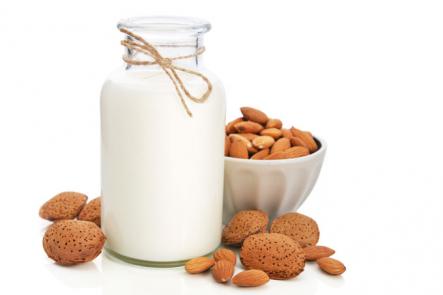Advantages of Homogenizers in the Food Industry
Since homogenization was first invented by Auguste Gaulin in 1899, hundreds of thousands of researches have been conducted on optimizing the process across numerous products. Homogenizers today are built to be highly efficient, by producing consistent, high quality products through lower pressure and ultimately lower energy consumption.
Consumer's Drive the Market

The aesthetics of packaging, as well as product consistency, taste, and appearance impact the buying decision of the consumer. Therefore it's important for manufacturers to carefully consider how their process is impacting their final product.
Homogenized Milk has been a largely debated subject, however homogenization can solve a number of quality challenges for producers. Studies have shown that consumers are less inclined to buy milk that has several layers and colour shades. Although this is the natural appearance of milk, homogenization helps to keep the colour consistent and uniform throughout.
Homogenizers Aid in Healthy Eating
A growing concern and trend for eating healthily has been posing challenges for Food and Beverage producers. With a number of criteria that appears to be gathering speed:
- Keeping the product natural
You will notice more and more products include wording such as "no preservatives", "no additives", "organic", "no artificial flavourings" etc...
Typically the function of additives is to increase viscosity, but homogenization can improve viscosity without the need for additives. Homogenizers increase viscosity through breaking down hydrogen bonds in fibres and replacing them with hydrogen bonds with water. Pectin in fibres also becomes more accessible.
Artificial colouring and flavouring can be avoided through homogenization. During the process, fruit and vegetable cells break-up and become smaller. This presents the product with an unvaried appearance of colour. By reducing the working pressure of the homogenizer, the heat generated will be reduced and the product will retain its natural taste and flavours better.

2. Yoghurt for Dessert
Over the last decade Yoghurt has quickly become the people's choice for dessert over ice cream and milk shakes. The process of making yoghurt drinks requires a homogenizer to liquefy it. Most dairy manufacturers of yoghurt are also likely processing milk. It is not uncommon to process milk one day and then switch over to yoghurt the next day on the same line. Therefore it is advantageous to purchase a homogenizer that can handle both viscous products like yoghurt as well as milk without having to change the valves.
3. More people are going vegan
Britain has seen a huge increase in young people turning vegan. According to a 2016 survey, the number of vegans has increased by more than 360% over the last 10 years. But what is influencing people to avoid a meat and dairy diet? One thing we know for sure is that there has been a large increase and consumption of milk substitutes from rice, nuts, grains and soya.
However these are not just consumed by vegans, for example, almond milk is a popular choice in the fitness industry for athletes. Homogenizing almonds can result in fast wear due to the abrasive particles. Likewise with other nuts, rice and grains. Therefore producers need to carefully consider the durability of a homogenizer when processing these products into drinks.
Opting for harder product contact parts such as tungsten carbide seals and ceramic coated pistons will reduce maintenance downtime, and the cost of spare parts.

Extended Shelf Life and Preservation through Homogenization
High pressure homogenizers have proven that tomato juice can have improved consistency and viscosity. By using a homogenizer to improve food processing outcomes, producers can elevate their products above competition and ultimately increase sales.
Traditionally heat treatment processes have been used to preserve food. Although high pressure and heat can kill harmful microorganisms, heat exposure can kill some of the food's naturally occurring nutrients. Whereas homogenization does not create the nutrient killing temperatures, leaving them untouched and ready for consumption.
Shelf life and preservation go hand in hand in terms of chemical stability. A high pressure homogenizer causes most foods to develop more stable chemical structures. This provides the product with a longer shelf life than would have otherwise been possible.
Take full advantage of using a homogenizer in your process by speaking with one of our experts today.
+64 (0) 9 263 0578
Checkout our used homogenizers.